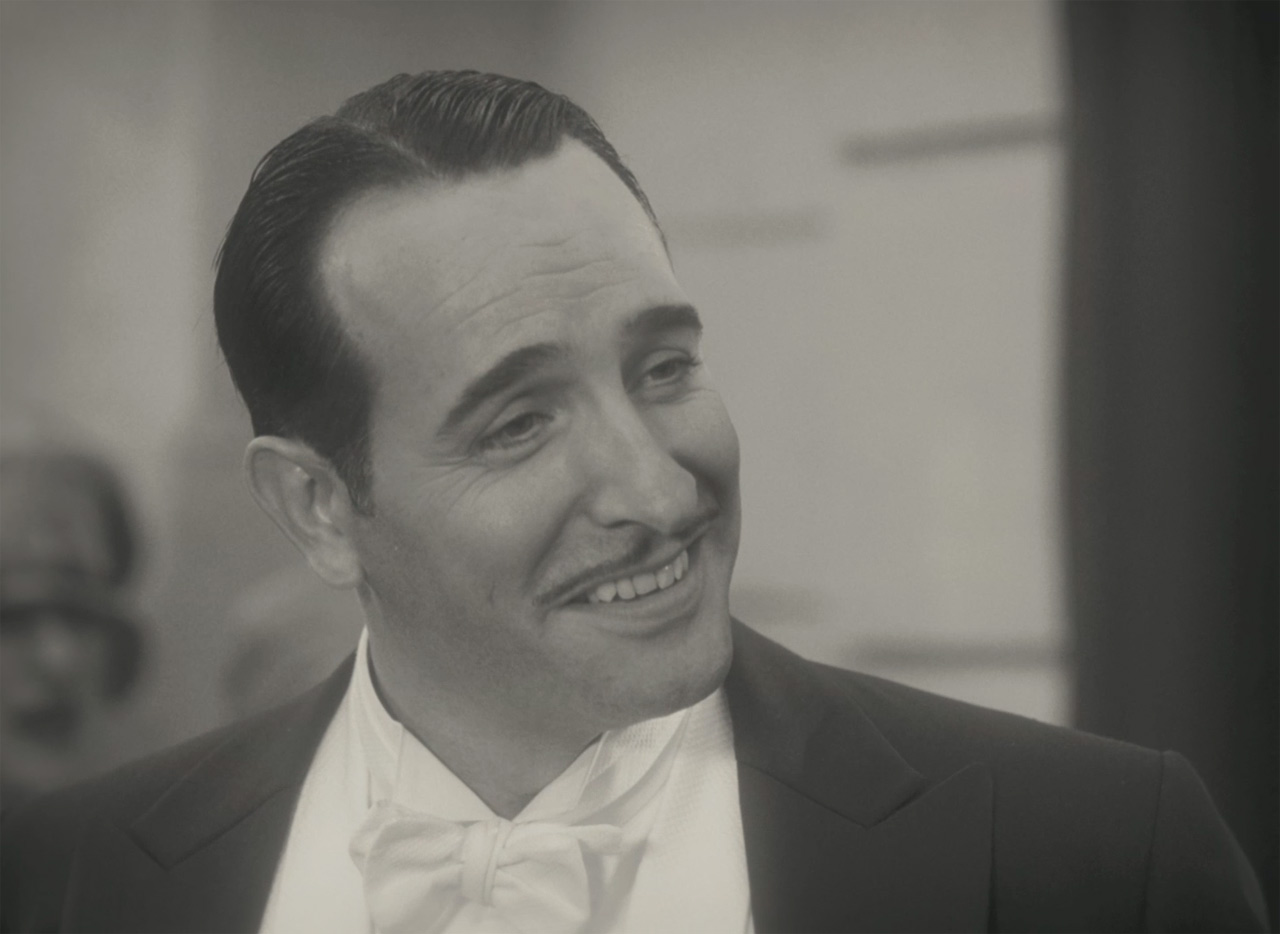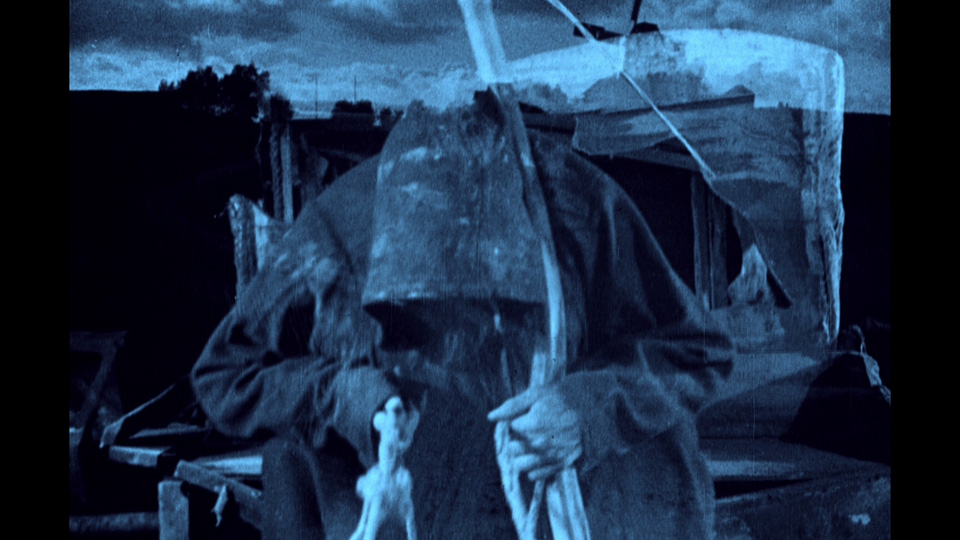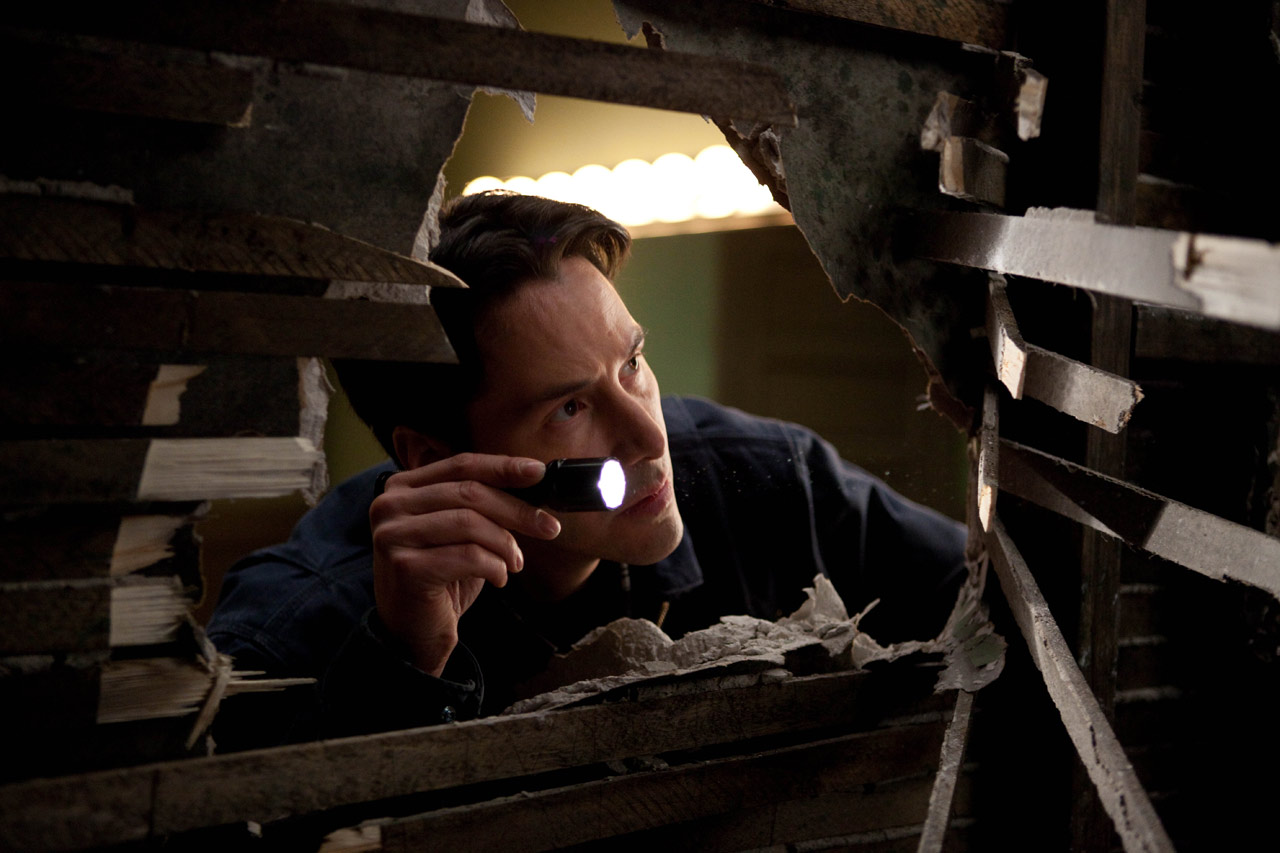
The Artist
Shot mostly silent, in black and white, and with the squarish, Academy-ratio framing that predated widescreen cinematography, writer-director Michel Hazanavicius's The Artist is a Frenchman’s tribute to old-school Hollywood filmmaking. Jean Dujardin plays George Valentin, one of those silent-film actors who scoffed at the popularity of talking pictures until their careers hit the skids. Bérénice Bejo, who co-starred with Dujardin in Hazavanicius’s secret-agent comedy OSS 117: Cairo, Nest of Spies, is fangirl-turned-starlet Peppy Miller, who looks to George as a mentor. But George, a generation her senior, refuses to embrace the talkies and his career fades to black as Peppy becomes a marquee name in her own right. As you might imagine, this situation leads to professional jealousy, personal resentment and, eventually, redemption through the love of a good woman.
The results are entertaining enough, but tepid. Hazanavicius is content with a familiar cardboard cut-out view on old Hollywood, which is ruled by cigar-chomping moguls (personified by John Goodman), attended by a stoic service class (the dependable James Cromwell), and befriended by ingratiating companion animals (Uggie, an adorable terrier who manages to wear out his screen welcome). The Artist plays less like an original take on the early sound era than it does as fan fiction set in the world of Singin’ in the Rain. And on a character level, The Artist is just the story of a midlife crisis. Studies of the male ego can be unnerving and lacerating, but this one is unceasingly generous and forgiving. The Artist wants badly to be liked — by nostalgia buffs, by American audiences looking for happy endings, and by a film industry that relishes flattery of the technical marvel that a movie is.
Did I have a good time? Sure I did. Dujardin and Bejo are fine comic actors with a loose but careful physicality that serves the film well. It’s a great-looking movie, thanks to the efforts of both Hazanavicius and his cinematographer, Guillaume Schiffman. And it makes savvy use of its own silence. I loved an early cut to an audience in rapturous applause that suddenly drew attention to the absurd quiet of the screening room, and to how much our imaginations can be counted on to take cues and fill in missing auditory information during a silent film. A bit later, there’s a brief aural detour that is both playful and tremendously effective at conveying George’s anxiety at the dominance of sound technology. (Honestly, it reminded me of “Duck Amuck,” with George as the Daffy surrogate, suffering at the hands of an unseen sound mixer.) Finally, there’s a grace note in the film’s final minute that suddenly, and unexpectedly, expands the scope of George’s story to dovetail with Hazanavicius’s own as a European working in Hollywood. It’s easy to see why so many viewers consider it a cause celebré, but I’m a little surprised that critics, as a class, have gone for it wholeheartedly — by so aggressively positioning itself as cinematic comfort food, The Artist lowers the stakes considerably on its own story.
Posted by on November 25, 2023 12:15 PM

